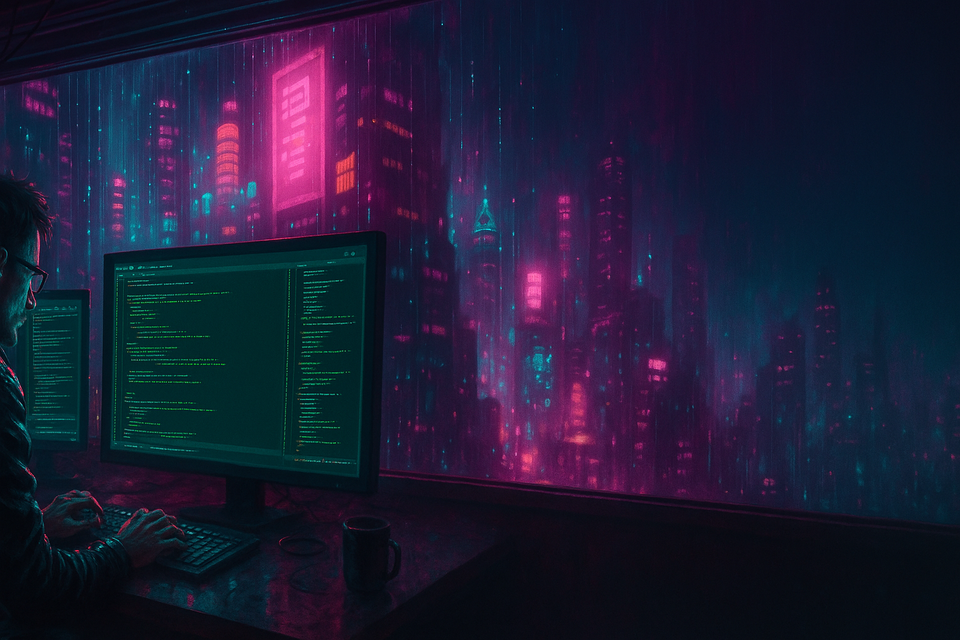The Hidden Complexity of Local AI: Why Building Your Own Engine Changes Everything

The Hidden Complexity of Local AI: Why Building Your Own Engine Changes Everything
The AI world is at a crossroads. While everyone's talking about the latest cloud-based models, a quiet revolution is happening in basements, home offices, and enterprise data centers worldwide. Developers are building local AI engines that run entirely on their own hardware—no cloud required.
But here's what most people don't realize: local AI is way harder than it looks, add local ai agents that can handle crypto and you are for a complexity engineering treat.
One of our core developers, Nico, just published a deep dive into the real challenges of building local AI infrastructure, drawing from his experience creating Shinkai. What started as "let's run models locally" quickly became "let's reinvent the entire AI stack from scratch."
Why This Matters Right Now
The shift toward local AI isn't just about privacy (though that's huge). It's about control, cost, and capability. When your AI agents run on your hardware, you own the entire pipeline. No usage limits, no vendor lock-in, no sending sensitive data to third parties.
But the gap between "running a model" and "running a production AI system" is enormous. Nico's post reveals exactly what fills that gap—and why most developers underestimate the complexity by orders of magnitude.
The Five Pillars Nobody Talks About
Local AI engines require mastering five interconnected systems that cloud providers usually handle for you:
Cross-Platform Binary Management: Your users aren't developers. They won't install Python, configure environments, or debug dependency conflicts. You need to bundle everything—LLM runners, language runtimes, system libraries—and make it work across Windows, macOS, and Linux without breaking.
Bulletproof Security: When AI agents process sensitive data locally, traditional cloud security models don't apply. Shinkai implements dual-layer encryption where messages get signed, encrypted for content, then encrypted again for routing. Get the order wrong and nothing works.
P2P Networking: Local doesn't mean isolated. Your AI agents need to communicate with other systems, punch through NATs, authenticate peers, and fall back gracefully when networks fail. This requires building on protocols like LibP2P while maintaining compatibility with standard networking.
Safe Code Execution: The most powerful local AI agents run arbitrary code—Python scripts, TypeScript tools, system commands. Doing this safely requires sophisticated sandboxing that isolates execution without breaking functionality.
Model Orchestration: Loading a 7B parameter model isn't just model.load(). You need validation, memory management, hot-swapping, quantization, and graceful degradation across different hardware configurations.
Real-World Impact
These aren't just technical challenges—they unlock entirely new possibilities:
- Enterprise teams can run AI workflows on proprietary data without it ever leaving their premises
- Developers can create AI agents that understand codebases, run tests, and generate documentation completely offline
- Researchers can build reproducible multi-agent simulations without cloud bills
- Financial traders can run market-making algorithms where private keys never leave their local machines
The Architecture That Makes It Possible
Shinkai's approach shows what production local AI looks like: a Tauri/React desktop app communicating with a Rust core that orchestrates embedded Ollama models, Python/Deno tool runners, and encrypted P2P networking. Every component is designed for offline-first operation with optional connectivity.
The devil is in the details—like using OnceLock for thread-safe model loading, implementing GGUF validation before uploading to Ollama, and coordinating complex bootstrap sequences across multiple processes. These aren't just engineering choices; they're the difference between a demo and a system people can actually rely on.
Why This Is Hard (And Worth It)
Building local AI infrastructure means becoming an expert in systems programming, cryptography, distributed computing, and ML operations—all at once. The technical debt accumulates quickly because you're building everything cloud providers typically handle.
But the payoff is enormous. Companies that master local AI today will have significant advantages as the industry inevitably shifts toward local-first architectures. The question isn't whether this transition will happen—it's whether you'll be ready for it.
Read the Full Technical Deep Dive
Nico's post goes far beyond what we've covered here. He shares actual code from Shinkai's implementation, explains the architectural decisions behind our P2P networking layer, and provides a roadmap for developers who want to build their own local AI engines.
Whether you're a startup founder evaluating local vs. cloud AI, an enterprise architect planning your AI strategy, or a developer curious about the technical challenges of local AI, this post offers insights you won't find anywhere else.
Ready to experience local AI for yourself? Download Shinkai for Windows, Mac, and Linux at shinkai.com. See firsthand what's possible when you own your entire AI stack.


